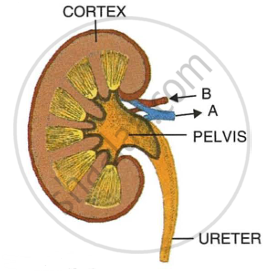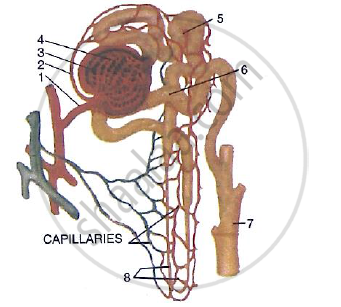Advertisements
Advertisements
प्रश्न
Answer the following question.
State the role of liver in urea production.
उत्तर
- Ammonia formed during the breakdown of amino acids is converted into urea in the liver of ureotelic animals.
- This conversion takes place by the help of the ornithine/urea cycle.
- 3 ATP molecules are used to produce one molecule of urea using the ornithine/urea cycle.
Since, the liver contains carrier molecules and enzymes necessary for urea cycle, it plays a major role in urea production.
APPEARS IN
संबंधित प्रश्न
The nephrons discharge their urine at ______.
Name the two parts of a plant through which its gaseous waste products are released into the air.
Answer the following in detail.
Describe the process of urine formation.
In summer the urine is slightly thicker than in winter explain the reason.
Given below is a simplified diagram of the human kidney cut open longitudinally. Answer the questions that follow.
 |
- Define excretion.
- Why does the cortex of the kidney show a dotted appearance?
- Why does the medulla of the kidney show a striped appearance?
- Write two differences in the composition of the blood flowing through the blood vessels 'A' and 'B'.
The following diagram represents a mammalian kidney tubule (nephron) and its blood supply.

Parts indicated by the guidelines 1 to 8 are as follows:
1. Afferent arteriole from renal artery
2. efferent arteriole
3. Bowman’s capsule
4. Glomerulus;
5. Proximal convoluted tubule with blood capillaries;
6. Distal convoluted tubule with blood capillaries;
7. collecting tubule;
8. U-shaped loop of Henle
Study the diagram and answer the question that follow:
Where does ultrafiltration take place?
Explain the difference between the excretory system of humans and plants.
Choose the correct answer:
A condition of failure of kidney to form urea is called ____________
Choose the odd one out in the following serie:
Column of Bertini, minora calyces, brain.
Describe in brief how urine is produced in the human body.
